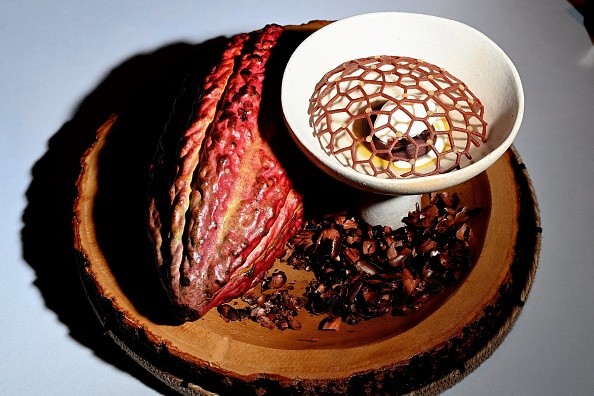Chocolate, one of the world's most popular delicacies, is made in a multistep process that begins with freshly picked cocoa beans.
People have been experimenting with chocolate for millennia, and new approaches are continuously being offered today.
Researchers have discovered that a different processing phase is known as 'moist incubation' produces a fruitier, more flowery-tasting dark chocolate than the traditional fermentation method.
How to make a cocoa fruitier and flowery taste
 (Photo : PETER PARKS/AFP via Getty Images)
(Photo : PETER PARKS/AFP via Getty Images)

After harvesting, cocoa beans are customarily wrapped in banana leaves and left to ferment for a few days.
Microbes in the environmental damage the pulp around the beans during this period, heating and acidifying them.
This triggers biochemical changes in the beans that minimize bitterness and astringency while the product he chocolate-like smells and fragrances.
Scientists have discovered a non-microbial method known as wet incubation, wherein dried, non-fermented cocoa nibs are rehydrated in an acid catalyst, heated for 72 hours, and then re-dried, as per ScienceDaily.
The approach, which is speedier and easier to manage than fermentation, created odors in beans that were comparable to fermentation, with minor variances.
Irene Chetschik, Ansgar Schlüter, and colleagues sought to know how the flavor and scent of the end product chocolates differed when wet incubation was used instead of typical fermenting.
The chocolate bars were created with moist incubated or fermented dry cocoa beans, as well as unfermented beans as a control.
Sensory panelists reported that the moist incubated sample had stronger fruity, floral, malty, and caramel-like fragrances, whereas the cultured sample had stronger roasty aroma components, and the bar was prepared from unfermented beans had a predominantly green aroma.
The wet incubated sample was evaluated as the sweetest by the judges, while the unfermented chocolate was ranked as the most bitter and astringent.
Identifying aromatic compounds by gas chromatography (GC)-olfactometry and subsequent quantification by GC-mass spectrometry revealed higher levels of malty compounds known as Strecker aldehydes and lower levels of roast compounds known as pyrazines in moist incubated chocolate compared to fermented chocolate.
The researchers came to the conclusion that moist incubation creates chocolate with a pleasing scent and flavor and might thus be used as an alternative postharvest treatment.
Read more: Dark Chocolate Improves Brain Function
How is chocolate being processed?
The cocoa harvest, like many other tropical crops, is spaced out over several months, with a big peak and a smaller peak of pod ripeness/harvesting.
To avoid harm to the flower cushions, carefully remove the pods from the trees using a knife.
The cocoa beans are cleaned after they have been inspected and tested to guarantee conformity with international standards and regulatory requirements.
The chocolate flavor is created in two stages: the first on the farm by the grower's perfect fermenting of the wet beans, and the second in the factory by the processor during the roasting step.
A good chocolate flavor cannot be achieved by just following one of these processes.
Much of the pulp drains away during the first stages of fermentation, and the beans are fermented between 36 and 72 hours.
The mechanisms of flavor formation are complicated and remain poorly understood, despite recent advances achieved via the application of professional analytical and sensory assessment (flavor profiling) approaches.
After fermented, the moisture level of the beans must be lowered from 55 percent to 7.5 percent - an acceptable moisture content for safe storage of cocoa in the tropics for a couple of months.
Smallholders in the communities arrange the wet beans on elevated bamboo mats or, less adequately (for sanitary reasons), on concrete platforms on the ground.
Processing cocoa beans may be regarded as a one-of-a-kind technique.
While all producers have the same goal of producing products effectively, the flavor objectives for cocoa liquors often vary from business to company and nation to country.
Nibs grinding has made significant breakthroughs in the latter part of the twentieth century.
Prior to the invention of liquor mills, one technique of grinding nibs was to combine them with granulated sugar and place the mixture in a mélangeur.
This method produced a substance with a viscosity ranging from paste to fluid.
Related article: Wine & Coffee Lovers Unite! Study Shows Red Wine, Dark Chocolate Good For Your Gut
© 2024 NatureWorldNews.com All rights reserved. Do not reproduce without permission.





